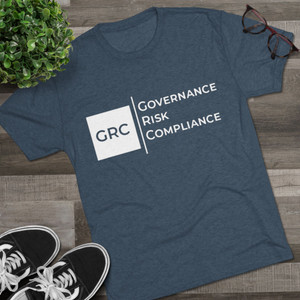CIS Critical Security Controls (CSC)
Name: CIS Critical Security Controls (CIS CSC)
Type: Framework
Authoritative Source: Center for Internet Security (CIS)
Certification Available: No. CIS does not offer a third-party certification.
Too Long / Didn’t Read (TL/DR): CIS Controls v8.1 represent a refined and thoughtful evolution of one of the most practical, community-grounded cybersecurity frameworks available today. By threading governance, clarity and real-world applicability into an already proven set of safeguards, CIS has strengthened the framework’s relevance and impact.
Organizations that adopt v8.1 should not approach is as a checklist, but as a living blueprint integrated with broader frameworks. This approach will be better positioned the organization to manage risk, demonstrate compliance and mature their cybersecurity posture.
Cost To Use CIS CSC
CIS CSC is free to use for organizations, as long as it is in accordance with the CIS’ licensing restrictions.
Origins of CIS CSC
The CIS Controls traces its roots to 2008, when a group of cybersecurity experts, largely within U.S. defense and academia, recognized the chaotic state of control guidance. What began as the Consensus Audit Guidelines (also known as the “SANS Top 20”) evolved through stewardship to rest with the Center for Internet Security (CIS).
- Version 1 introduced Implementation Groups (IG1, IG2, IG3) to help organizations scale controls by risk and resource. Version 8 simplified the framework, restructuring from device-centric measures to data-centric guidance, consolidating 20 controls into 18 and enhancing alignment with cloud and modern environments.
- Version 1 built upon v8 with a focus on governance, clarity and alignment—while keeping disruption minimal for current users.
CIS CSC Adoption Across Industries
Globally, the controls are widely adopted across sectors range from municipalities and energy firms to SaaS platforms due to their practicality, community-driven development and mapping to other frameworks. CIS CSC have long served as a prioritized, actionable baseline in:
- Financial Services, Healthcare and Critical Infrastructure;
- Technology, Cloud/Mobile environments and hybrid IT; and
- Manufacturing and Industrial Control Systems.
Strategic Value and Industry Impact of CIS CSC
- Actionable and Prioritized. By focusing on the most effective controls first, CIS enables tactical impact where it’s needed most.
- Flexible and Scalable. The model adapts to organizations of various sizes and maturity levels.
- Harmonized Compliance. Strong alignment with NIST CSF 2.0 and other standards streamlines assurance landscapes.
- Governance Elevation. The addition of the Govern domain reinforces that cybersecurity is not merely technical—it’s strategic.
- Operational Clarity. Simplified language and asset clarity make implementation more consistent and less risky.
Common Methods to Implement CIS CSC
- Determine Your Implementation Group. Start by selecting your Implementation Group (IG) based on organizational size, risk profile and capability:
- IG1 (essential hygiene);
- IG2 (intermediate defense); or
- IG3 (advanced).
- Inventory and Asset Classification. Leverage the expanded asset classes in v8.1 to catalog not only devices and data, but also documentation and processes.
- Prioritize Controls. Implement safeguards according to priorities set in IGs. Focus first on controls that reduce attack surface (e.g., asset inventory, access management, patching).
- Integrate Governance. Use the new Govern function to formalize policy ownership, executive accountability, risk metrics and compliance monitoring.
- Align with Other Frameworks. Use v8.1 mappings to NIST CSF 2.0, NIST SP 800‑53, ISO 27001, PCI DSS, etc., to streamline multi-framework compliance.
- Document Implementation. Maintain evidence of the "what, how, who, when" for each safeguard to support assessment, audit and continuous monitoring.
- Assess and Iterate. Perform gap analysis, audits, vulnerability scanning and assessments regularly. Use tools like CIS-CAT and CIS RAM to support measurement.
The Indispensable Role of Documentation In CIS CSC
Robust documentation plays a non-negotiable role in applying v8.1 controls effectively. Key categories include:
- Policy Artifacts. Governance charters, access control policies, change management procedures;
- Implementation Artifacts. Configuration guides, operational playbooks, automation scripts;
- Evidence Records. Logs, scans, patch history, training records, incident reports;
- Mapping Documents. Cross-reference CIS Safeguards to IG, asset class and external framework controls; and
- Assessment Outputs. Internal assessment reports, audit findings, remediation plans.
** SPONSORED CONTENT **



